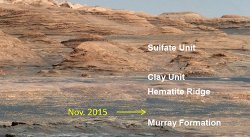Planetary Geosciences

We investigate the geology, surface composition, and interiors of terrestrial planets, covering a range of topics including planetary mapping, data analysis, laboratory studies, and modeling. Group members work in all phases of mission work, including development, hardware, and operations.
- What are the geologic and tectonic histories of the terrestrial planets and satellites?
- How did the terrestrial planets form?
- What is the elemental and mineralogical composition of surface materials?
- Are there any habitable environments where life may have originated?
- What is the interaction between the atmosphere and the surface materials (e.g. soils)?
Geophysics & Planetary Geosciences: Missions and Projects
- MSL Curiosity Rover
- Juno
- Mars Rover Opportunity
- Mars Orbiter
- InSight
- Lunar Flashlight
- Mars 2020
- Rosetta
- Cassini
We study the solid bodies in the solar system, with particular emphasis on planets and major satellites. Our research topics include tectonics, volcanology, impact processes, geologic mapping, surface geochemistry and mineralogy, interior structure, lithosphere and mantle dynamics.
The bodies we study include Mars, Earth, Venus, Moon, Io, Europa, Titan, Vesta and Ceres, and our methods include image interpretation (visible, infrared, radar), laboratory work, field work, infrared spectroscopy, geophysical data interpretation, modeling, and laboratory work.
The thrust of our group is twofold: we do independent research but are also heavily involved in flight projects, with scientists holding key positions in flight projects. Our scientists are also involved in missions currently under development and various competed mission proposals (e.g., in the Discovery and New Frontiers programs), and in the analysis of the rich data sets provided by current and past missions. Our expertise in geology and geophysics provides core science support for numerous current flight projects at JPL and for studies of future missions. We propose missions and instruments that will bring new understanding to the interiors and surfaces of solid bodies in the solar system.